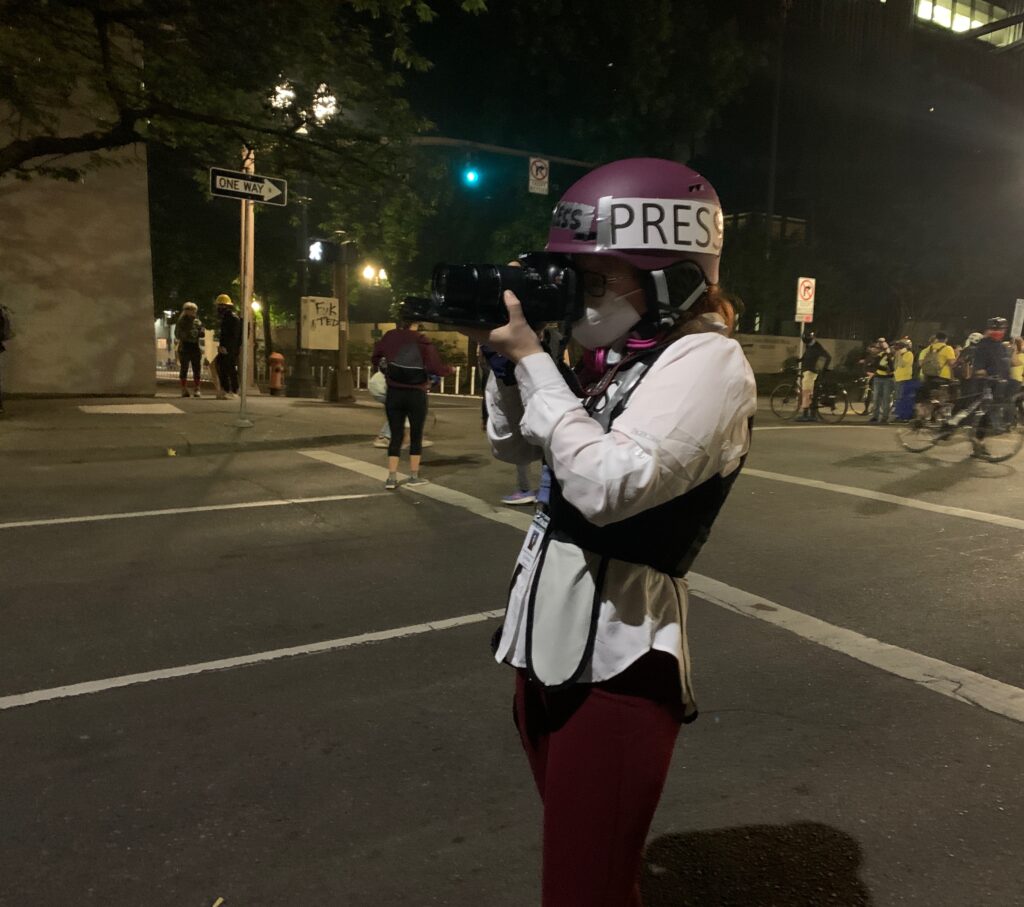Introduction
Hi Watchdogs, and welcome back to your favorite newsletter. This week, we’re making you second guess visiting family members during the pandemic, eating at McDonald’s and how you think about fertilizer (if you think about fertilizer on a regular basis).
🚨 Exclusive: The White House Coronavirus Task Force sees troubling coronavirus numbers in 10 local areas across the country, according to a recording of a private call we obtained between task force leader Dr. Deborah Birx and state and local officials.
Some areas of concern: Baltimore, Atlanta, Kansas City, Portland, Omaha and California’s Central Valley.
Areas that need to “get it together” according to Birx: Boston, Chicago, Detroit and Washington, D.C. These cities are seeing small increases in positive cases.
Birx also emphasized that the current outbreaks are different from ones that happened in the spring because they’ve penetrated more rural areas. She said that family gatherings in “red” or “yellow” counties or places with a high percentage of coronavirus cases should stop family gatherings, calling them “superspreader” events.
The White House report that classified which counties were “red” or “yellow” was not made public, though it was distributed to governors. We first obtained the report in July.
These reports have extremely detailed, county-by-county assessments and recommendations for curbing the spread. Health experts say not sharing this publicly is like hiding satellite info that helps each state prep for a hurricane.
Information can save lives. Chip in to help keep our newsroom going.
We can’t do this work without your support.
Sick with COVID? Good luck getting time off: President Trump signed the Families First Coronavirus Response Act, which requires certain small- and medium-sized businesses to pay a worker’s full salary for two weeks if they become infected with COVID-19.
Turns out, nearly half of all workers nationwide didn’t know about the law. And it seems companies didn’t make it clear to staff that they’d get paid sick leave.
As of June 12, nearly 700 companies illegally denied workers paid sick days, according to Labor Department records we obtained via a Freedom of Information Act request.

Case in point: When McDonald’s employee Angely Rodriguez Lambert in Oakland, California, was exhibiting symptoms, she asked if she could leave work. But her supervisor told her to stay. Over the next few days, she was one of 11 employees in the McDonald’s that would test positive for coronavirus. Forced to quarantine, her boss said she probably wouldn’t get paid. She didn’t know she had a right to a paycheck.
Loophole: It’s unclear if the owners actually broke the federal paid leave law, because she and other employees didn’t file a complaint to the Labor Department.
In addition to half a dozen McDonald’s franchise restaurants, other big-names that violated the law include Comfort Suites, Courtyard Marriott and Red Roof Inn franchises. We have the full investigation on how low-wage workers are denied sick leave during the pandemic.
If you think what happened in Beirut couldn’t happen in the U.S., think again.
Earlier this week, a massive explosion in Beirut killed at least 135 people and injured 5,000 others. Officials linked the blast to 2,750 tons of confiscated ammonium nitrate that was improperly stored in a warehouse for six years.
The chemical is also found in fertilizers stored across the country. We’ve seen explosions caused by ammonium nitrate in the U.S. before –– including the 2013 blast that killed 15 and injured 260 people in Texas and the 1995 bombing of the Alfred P. Murrah Federal Building in Oklahoma City that killed 168.
The rub: The chemical isn’t on the Environmental Protection Agency’s list of “highly hazardous” chemicals. An investigation we published earlier this year also found uneven oversight of ammonium nitrate in the U.S., even after efforts to strengthen federal rules.
There’s also a government agency that investigates accidents and makes safety recommendations called the Chemical Safety and Hazard Investigation Board. Trump wants it gone.
Related: Lebanese authorities have taken 16 individuals into custody as part of an investigation into the blast. (via Al Jazeera)
What we’re following:
- New York Attorney General Letitia James took action to dissolve the National Rifle Association following an 18-month investigation that found evidence the nonprofit misused charitable funds for personal gain, awarded contracts to friends and family members and former employees to ensure loyalty. The NRA has also long leaned on its nonprofit status to raise millions. Registered as a social welfare organization, the NRA is legally allowed to accept unlimited donations without disclosing any identities or political affiliations.
- If you’re looking for a comprehensive breakdown of most everything that went down so far during the coronavirus pandemic, Ed Young at The Atlantic has you covered in a well-worth-it, 30-something-minute read. BTW, he also reported in 2018 that the U.S. was not ready to handle a pandemic. He was right.
- Portland Mayor Ted Wheeler urged nonviolent protesters to avoid city gatherings where violence is likely to occur on Thursday. He also warned against risks of confrontations being used as a “prop” in national advertisements to aid Trump’s re-election campaign. (via Oregon Live)

Eddy Binford-Ross is a rising high school senior who has spent a good amount of her summer vacation dodging tear gas at protests. Binford-Ross — the editor in chief of Clypian, South Salem High School’s student newspaper — has been covering the Black Lives Matter protests in Portland, Oregon, where tactics being used by federal officers have made national headlines. She was shoved by officers and had stun grenades thrown her way, but that didn’t stop her from reporting the story.
What made you interested in covering the standoff in Portland between protesters and federal law enforcement officers? What kept you going back every night?
I have been covering the Black Lives Matter protests in Salem, Oregon, since the beginning. And I had been following Portland before the federal officers showed up. Once the news started to break about the guy who got hit in the head by a munitions canister, and about officers using unmarked vans and unmarked uniforms to pick up people from the street, that was when I told my parents, “We need to go and check this out for ourselves.”
I went up with my dad, and that first night was crazy, because the police response was on a scale unlike anything I had ever seen. When the federal officers came out at the end of one of the city commissioner’s rally, mostly protesters were just sitting on the steps, or standing around the steps listening to music and they just came out and were yelling at everyone to move. Then they started tear gassing everyone. And so it was then that I’m like, “I have to keep coming back. I have to keep seeing how every night is.” I went back almost every night until the federal officers left.
Do you think that you have faced any hostility because of your role as a journalist? Do you think that people looked at you in a different way or treated you a different way once they knew that?
We’ve seen that 100% from the officers. I submitted a declaration in the ACLU suit that resulted in the temporary restraining order, because I had a munitions gun pointed at me while I was standing off to the side with the press corps and there were no protestors near us. And then they turned that gun away. After another officer told them to turn it away, ‘cause that’s press, he turned it right back towards us, even though we were just standing there. I’ve had multiple stun grenades thrown towards me while I was standing off to the side of protesters. I was shoved into the wall at one point. I was standing up against the wall when officers came running out, and I was trying to get out of their way and they seemed to go out of their way to shove me into the wall.
Binford-Ross’ advice to young journalists covering protests: Bring safety equipment. Bring water if there’s a potential of tear gas. Bring masks. And if you don’t have masks, bring bandanas. Bring helmets, bring goggles, all of that. And then, really, be safe. The story is important, but your safety is more important than the story.
Thanks everyone for reading until the end. I’ll admit it –– I’m on TikTok. (And I’m maybe too old for it.) What do you think about Trump’s executive order and TikTok’s threats to pursue legal action? Reply to let me know. See you next week.
Read more in Inside Public Integrity
Watchdog newsletter
Words matter: Was the attack on the Capitol a rally, protest or insurrection?
The question remains how history will record the events that resulted in mayhem at the U.S. Capitol.



Join the conversation
Show Comments